At the moment at which he described the machine’s success, I completely lost it.
Baby Burping Robot
This article is a repost promoting content originally published elsewhere. See more things Dan's reposted.
Dan Q
This article is a repost promoting content originally published elsewhere. See more things Dan's reposted.
At the moment at which he described the machine’s success, I completely lost it.
Today, I received my long-awaited copy of A Day in the Life of Marlon Bundo, a book inspired by the US Vice President’s family pet not to be confused with Marlin Bundo’s A Day in the Life of the Vice President, which it satirises. In case you’ve been living under a rock: the family of US Vice President Mike Pence have a pet rabbit called Marlon Bundo (and who doesn’t appreciate some punmanship in their pet’s name) and they wrote the latter book that attempts to explain, through the eyes of Marlon Bundo, what the Vice President does. And then John Oliver, who’s become a bit of a master of doing nice things in a dickish way, released the former a few hours earlier and subsequently thoroughly outsold the Pence book.

This self-proclaimed “better Bundo book” tells a different (educational and relevant) story: in it, Marlon Bundo falls in love with another boy rabbit but their desire to get married is hampered by the animals’ leader, the Stink Bug, who proclaims that “boy rabbits can’t marry boy rabbits; boy rabbits have to marry girl rabbits!” With the help of the other animals, the rabbits vote-out the Stink Bug, get married, and go on a lovely bunnymoon… a cheery and uplifting story and, of course, a distinctly trollish way to piss off the (clearly anti-LGBT) Mike Pence. This evening, I decided to offer it as a bedtime story to our little bookwork. At four years old, she’s of an age at which the highly-hetronormative narratives of the media to which she’s exposed might be only-just beginning to sink in, so I figured this was a perfect vehicle to talk about difference, diversity, and discrimination. Starting school later this year means that she’s getting closer to the point where she may go from realising that her family is somewhat unusually-shaped to discovering that some people might think that “unusual” means “wrong”, so this is also a possible step towards thinking about her own place in the world and what other people make of it.

Her initial verdict was that it was “sweet”, and that she was glad that the Stink Bug was vanquished and that Marlon and Wesley got to live together happily-ever-after. I explained that while the story was made-up, a lot of what it was talking about was something that really happens in this world: that some people think that boys should not marry boys and that girls should not marry girls, even if they love them, and that sometimes, if those people get to be In Charge then they can stop those people marrying who they love. I mentioned that in our country we were fortunate enough that boys can marry boys and girls can marry girls, if they want to, but that there are places where that’s not allowed (and there are even some people who think it shouldn’t be allowed here!). And then I asked her what she thought.
“They’re like the stinky Stink Bug.”
That’ll do.
This article is a repost promoting content originally published elsewhere. See more things Dan's reposted.
Once you have friends with kids, your life is no longer about you. It’s about your friends’ kids.
Having friends with kids is a huge responsibility. It’s not for everyone. Maybe you like swearing, and having a child in the room would cut into that. Maybe you have ambitions outside of liking Facebook pictures of wispy-haired toddlers in pumpkin patches. Maybe you’re terrified that your friends will ask you to hold the baby and you won’t know what to do with the head because its neck doesn’t work yet and you’re afraid you’ll kill it.
Many couples choose not to have friends with kids and find fulfilling friendships with like-minded couples who also value disposable income over propagating the human race. Before you decide if having friends with kids is right for you, it’s important to ask yourselves a few questions.
Having friends with kids is a huge responsibility. It’s not for everyone. Maybe you like swearing, and having a child in the room would cut into that. Maybe you have ambitions outside of liking Facebook pictures of wispy-haired toddlers in pumpkin patches. Maybe you’re terrified that your friends will ask you to hold the baby and you won’t know what to do with the head because its neck doesn’t work yet and you’re afraid you’ll kill it.
Many couples choose not to have friends with kids and find fulfilling friendships with like-minded couples who also value disposable income over propagating the human race. Before you decide if having friends with kids is right for you, it’s important to ask yourselves a few questions.
…
This article is a repost promoting content originally published elsewhere. See more things Dan's reposted.
I see a lot of ideas online for things to do with your child, but most of them are a lot of work. Many of them involve an unnerving amount of craftiness and/or require going out to buy things. Almost all of them involve moving around which, many days, is fine, but some days can be pretty rough. N…
I see a lot of ideas online for things to do with your child, but most of them are a lot of work. Many of them involve an unnerving amount of craftiness and/or require going out to buy things. Almost all of them involve moving around which, many days, is fine, but some days can be pretty rough. Not that I don’t love getting down on the floor and playing with my kid (I love it a great deal) but I’m an adult in my mid-thirties. I can pretend to be a dinosaur for about 90 minutes (something I happily list on my professional resume) but after an hour and a half, all bets are off. And given that many days I’m home with my son for over eight hours, things can get a bit dicey.
I’ve taken the liberty of brainstorming some fun child/parent activities in which your child can be adventurous and creative and you can lie on the sofa reading a book. Here’s my list so far.
…
This article is a repost promoting content originally published elsewhere. See more things Dan's reposted.
Gritty blogs have given way to staged Instagram photos.
A grinning toddler is bundled in a creamy quilted blanket and bear-eared hat. Next to him, an iPhone atop a wicker basket displays a Winnie-the-Pooh audiobook. The caption accompanying the Instagram shot explains, “i am quite excited to have partnered with @audible_com…. i’m not sure who loves it more, this little bear or his mama!?”
More than 260,000 people follow Amanda Watters, a stay-at-home mom in Kansas City, Mo., who describes herself on Instagram as “making a home for five, living in the rhythm of the seasons.” Her feed is filled with pretty objects like cooling pies and evergreen sprigs tucked into apothecary vases, with hardly any chaos in sight.
This is the “mommy Internet” now. It’s beautiful. It’s aspirational. It’s also miles from what motherhood looks like for many of us — and miles from what the mommy Internet looked like a decade ago.
…
This article is a repost promoting content originally published elsewhere. See more things Dan's reposted.
The long read: Every baffled new parent goes searching for answers in baby manuals. But what they really offer is the reassuring fantasy that life’s most difficult questions have one right answer
Human beings are born too soon. Within hours of arriving in the world, a baby antelope can clamber up to a wobbly standing position; a day-old zebra foal can run from hyenas; a sea-turtle, newly hatched in the sand, knows how to find its way to the ocean. Newborn humans, on the other hand, can’t hold up their own heads without someone to help them. They can’t even burp without assistance. Place a baby human on its stomach at one day old – or even three months old, the age at which lion cubs may be starting to learn to hunt – and it’s stranded in position until you decide to turn it over, or a sabre-toothed tiger strolls into the cave to claim it. The reason for this ineptitude is well-known: our huge brains, which make us the cleverest mammals on the planet, wouldn’t fit through the birth canal if they developed more fully in the womb. (Recently, cognitive scientists have speculated that babies may actually be getting more useless as evolution proceeds; if natural selection favours ever bigger brains, you’d expect humans to be born with more and more developing left to do.)This is why humans have “parenting”: there is a uniquely enormous gap between the human infant and the mature animal. That gap must be bridged, and it’s difficult to resist the conclusion that there must be many specific things adults need to get right in order to bridge it. This, in turn, is why there are parenting advice manuals – hundreds and hundreds of them, serving as an index of the changing ways we have worried about how we might mess up our children.
…
To pre-empt any gatekeeping bronies in their generally-quite-nice society who want to tell me that I’m no “true” fan: save your breath, I already know. I’m not actually claiming any kinship with the brony community. But what’s certainly true is that I’ve gained a level of appreciation for My Little Pony: Friendship is Magic that certainly goes beyond that of most people who aren’t fans of the show (or else have children who are), and I thought I’d share it with you. (I can’t promise that it’s not just Stockholm syndrome, though…)
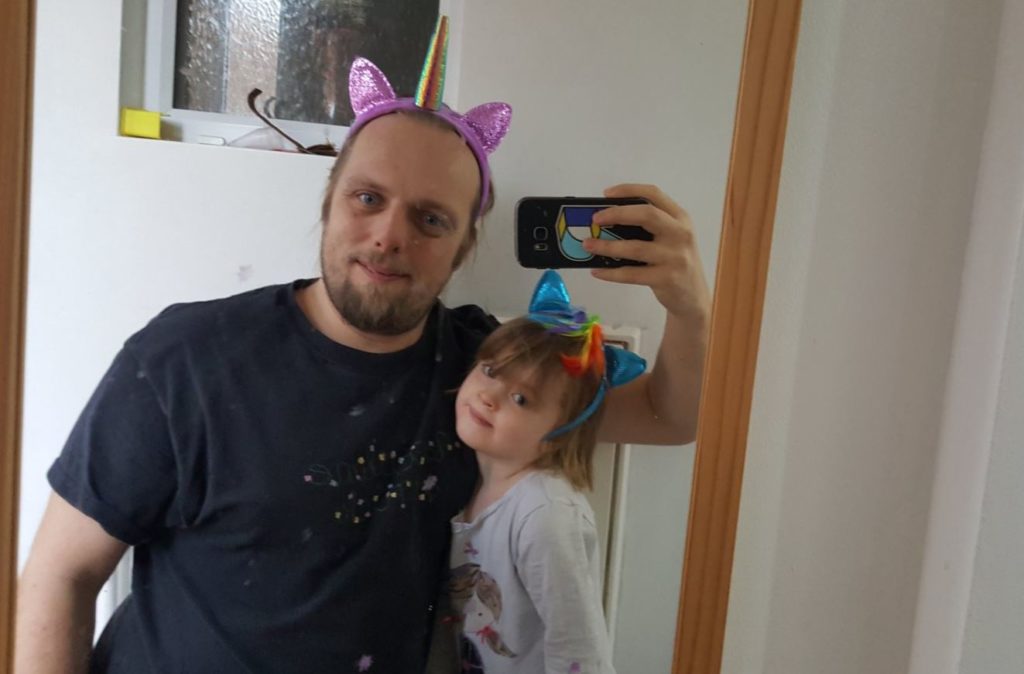
Ignoring the fact that I owned, at some point in the early 1980s, a “G1” pony toy (possibly Seashell) from the original, old-school My Little Pony, my first introduction to the modern series came in around 2010 when, hearing about the surprise pop culture appeal of the rebooted franchise, I watched the first two episodes, Friendship is Magic parts one and two: I’m aware that after I mentioned it to Claire, she went on to watch most of the first season (a pegasister in the making, perhaps?). Cool, I thought: this is way better than most of the crap cartoons that were on when I was a kid.
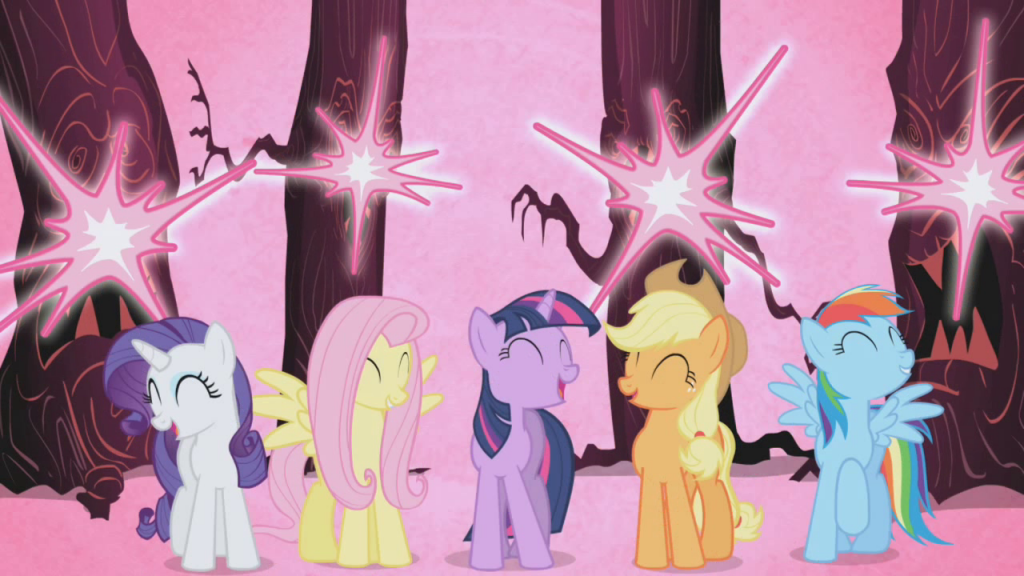
And then… I paid no mind whatsoever to the franchise until our little preschooler came home from the library, early in 2017, with a copy of an early reader/board book called Fluttershy and the Perfect Pet. This turns out to be a re-telling of the season 2 episode May The Best Pet Win!, although of course I only know that with hindsight. I casually mentioned to her that there was a TV series with these characters, too, and she seemed interested in giving it a go. Up until that point her favourite TV shows were probably PAW Patrol and Thomas the Tank Engine & Friends, but these quickly gave way to a new-found fandom of all things MLP.
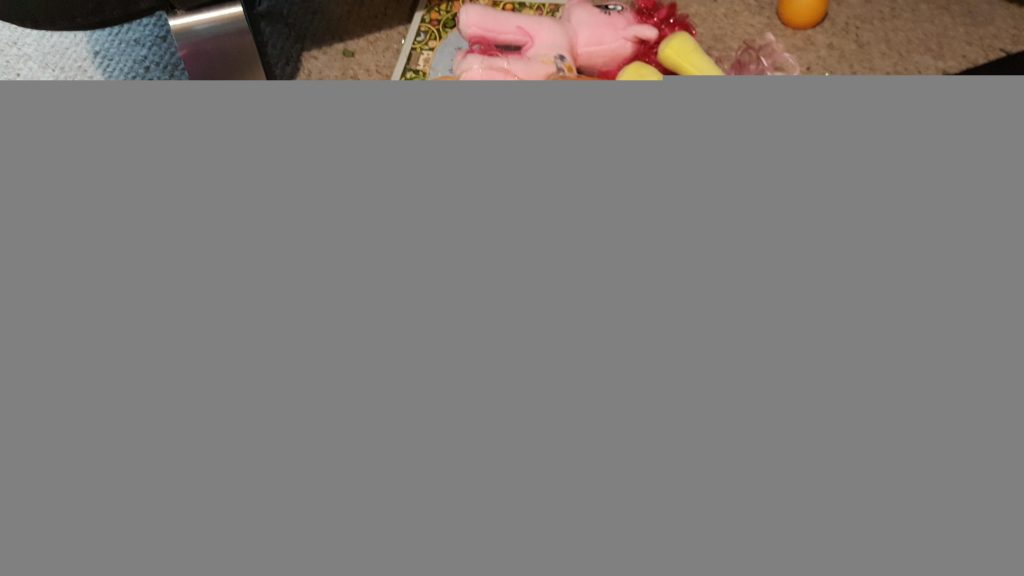
The bobbin’s now watched all seven seasons of Friendship is Magic plus the movie and so, by proxy – with a few exceptions where for example JTA was watching an episode with her – have I. And it’s these exceptions where I’d “missed” a few episodes that first lead to the discovery that I am, perhaps, a “closet Brony”. It came to me one night at the local pub that JTA and I favour that when we ended up, over our beers, “swapping notes” about the episodes that we’d each seen in order to try to make sense of it all. We’re each routinely roped into playing games for which we’re expected to adopt the role of particular ponies (and dragons, and changelings, and at least one centaur…), but we’d both ended up getting confused as to what we were supposed to be doing at some point or another on account of the episodes of the TV show we’d each “missed”. I’m not sure how we looked to the regulars – two 30-something men sitting by the dartboard discussing the internal politics and friendship dramas of a group of fictional ponies and working out how the plots were interconnected – but if anybody thought anything of it, they didn’t say so.

By the time the movie was due to come out, I was actually a little excited about it, and not even just in a vicarious way (I would soon be disappointed, mind: the movie’s mediocre at best, but at the three-year-old I took to the cinema was impressed, at least, and the “proper” bronies – who brought cupcakes and costumes and sat at the back of the cinema – seemed to enjoy themselves, so maybe I just set my expectations too high). Clearly something in the TV show had sunk its hooks into me, at least in a minor way. It’s not that I’d ever watch an episode without the excuse of looking after a child who wanted to do so… but I also won’t deny that by the end of The Cutie Remark, Part One I wanted to make sure that I was the one to be around when the little ‘un watched the second part! How would Starlight Glimmer be defeated?

At least part of the appeal is probably that the show is better than most other contemporary kids’ entertainment, and as anybody with young children knows, you end up exposed to plenty of it. Compare to PAW Patrol (the previous obsession in our household), for example. Here we have two shows that each use six animated animals to promote an ever-expanding toy line. But in Friendship is Magic the ponies are all distinct and (mostly) internally-consistent characters with their own individual identity, history, ambitions, likes and dislikes that build a coherent whole (and that uniquely contributes to the overall identity of the group). In PAW Patrol, the pups are almost-interchangeable in identity (and sometimes purpose), each with personality quirks that conveniently disappear when the plot demands it (Marshall suddenly and without announcement stops being afraid of heights when episodes are released to promote the new “air pup” toys, and Chase’s allergy to cats somehow only manifests itself some of the time and with some cats) and other characteristics that feel decidedly… forced. MLP‘s writing isn’t great by any stretch of the imagination, but compared to the other things I could be watching with the kids it’s spectacular!
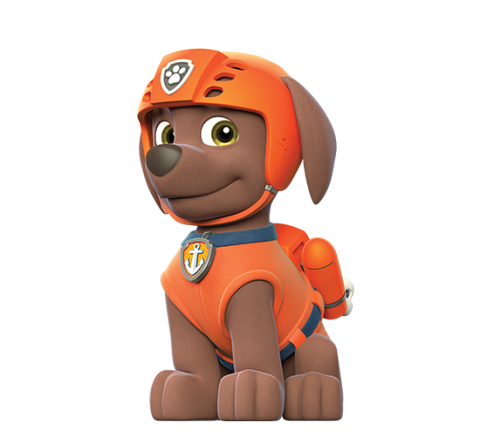
And compare the morality of the two shows. Friendship is Magic teaches us the values of friendship (duh), loyalty, trust, kindness, and respect, as well as carrying a strong feminist message that young women can grow up to be whatever the hell they want to be. Conversely, the most-lasting lesson I’ve taken from watching PAW Patrol (and I’ve seen a lot of that, too) is that police and spy agencies are functionally-interchangeable which very-much isn’t the message I want our children to take away from their screen time.
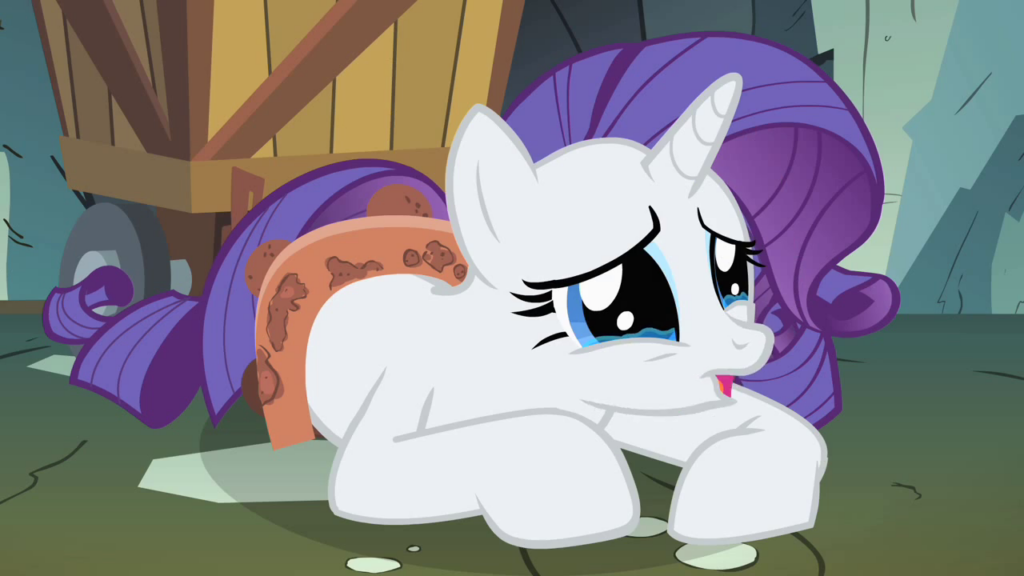
It’s not perfect, of course. The season one episode A Dog And Pony Show‘s enduring moral, in which unicorn pony Rarity is kidnapped by subterranean dogs and made to mine gemstones (she has a magical talent for divining for seams of them), seems to be that the best way for a woman to get her way over men is to make a show of whining incessantly until they submit, and to win arguments by deliberately misunderstanding their statements as something that she can take offence to. That’s not just a bad ethical message, it also reinforces a terrible stereotype and thoroughly undermines Rarity’s character! Thankfully, such issues are few and far between and on the whole the overwhelming message of My Little Pony is one of empowerment, equality, and fairness.

For the most part, Equestria is painted as a place where gender doesn’t and shouldn’t matter, which is fantastic! Compare to the Peppa Pig episode (and accompanying book) called Funfair in which Mummy Pig is goaded into participating in an archery competition by being told that “women are useless” at it, because it’s a “game of skill”. And while Mummy Pig does surprise the stallholder by winning, that’s the only rebuff: it’s still presented as absolutely acceptable to make skill judgements based on gender – all that is taught is that Mummy Pig is an outlier (which is stressed again when she wins at a hammer swing competition, later); no effort is made to show that it’s wrong to express prejudice over stereotypes. Peppa Pig is full of terrible lessons for children even if you choose to ignore the time the show told Australian kids to pick up and play with spiders.

I probably know the words to most of the songs that’ve had album releases (we listen to them in the car a lot; unfortunately a voice from the backseat seems to request the detestable Christmas album more than any of the far-better ones). I’m probably the second-best person in my house at being able to identify characters, episodes, and plotlines from the series. I have… opinions on the portrayal of Twilight Sparkle’s character in the script of the movie.

I don’t describe myself as a Brony (not that there’d be anything wrong if I did!), but I can see how others might. I think I get an exemption for not having been to a convention or read any fanfiction or, y’know, watched any of it without a child present. I think that’s the key.
Right?
#parenting #protip Use gaffer tape to keep your kids quiet on long car journeys.
https://danq.me/_q23u/2017/12/DRprXIvXUAEpyDn1.jpg
This article is a repost promoting content originally published elsewhere. See more things Dan's reposted.
This article is a repost promoting content originally published elsewhere. See more things Dan's reposted.
No matter how prepared you think you are for the questions your toddler might ask (and the ways in which they might go on to interpret your answer), they’ll always find a way to catch you off guard. The following exchange with our little one began last weekend in the car:
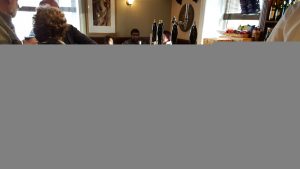
Her: “I read the Beano Annual at Grandtom’s house.” (Grandtom is what she calls Ruth‘s father – her maternal grandfather.)
Me: “Oh? Did you like it?”
Her: “Yes. Did you have the Beano Annual when you were a little boy?”
Me: “Yes: I would sometimes get one for Christmas when I was little.”
Her: “Who gave it to you?”
Me: “My mummy and daddy did.”
Her: “Your mummy is Nanna Doreen.”
Me: “That’s right.”
Her: “Why haven’t I met your daddy?”
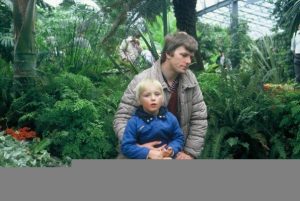
That’s a question that I somehow hadn’t expected to come up so soon. I probably ought to have guessed that it was on its way, given her interest in her extended family lately and how they’re all connected to one another, but I’d somehow assumed that it’d have come up organically at some point or another before her curiosity had made the connection that there was somebody clearly missing: somebody whom she’d heard mentioned but, inexplicably, never met.
Me: “My daddy died, a couple of years before you were born. He was climbing a mountain one day when he had a nasty accident and fell off, and he died.”
Her: “…” (a thoughtful pause)
Me: “Are you okay?”
Her: “How many birthdays did he have?”
Me: “Fifty-four. That’s a bigger number than you can count to, I think!”
Her: “How many birthdays will I have?”
Wow, this went further than I expected, very quickly. Obviously, I want to be open about this: the last thing I want is to introduce a taboo, and I’m a big believer in the idea that on I’m suddenly conscious of the fact that she’s clearly close to a minor existential crisis, having for possibly the first time connected the concepts of age and death. And, of course, I’m trying to translate my thoughts into ideas that a toddler can follow every step of the way. While simultaneously trying to focus on driving a car: she knows how to pick her timing! Okay…
Me: “Nobody knows for sure, but you’ll probably get lots and lots: seventy, eighty, ninety… maybe even a hundred birthdays!”
Her: “Then I’ll have a hundred candles.”
Me: “That’s right. Do you think you could blow out a hundred candles?”
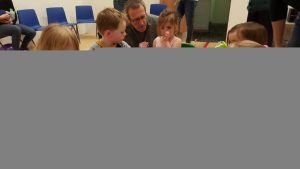
So far, so good. Knowing that, like most toddlers, ours has a tendency to make some new discovery and then sit on it for a day or two before asking a follow-up question, I briefed Ruth and JTA so that they wouldn’t be caught too off-guard when she started telling them, for example, what she’d like for her hundredth birthday or something.
And all was well until yesterday, when we were laying in the garden under the recent glorious sunshine, playing a game that involved rolling along the lawn and back and bumping into one another in the middle, when she stood up and announced that she’d like to play something different.
Her: “Now we’re playing the die game.”
Me: “Oh…kay. How do we play that?”
Her: “We’re going to go up a mountain and then fall off.”
Me: (following her in a stomp around the garden) “Then what do we do?”
Her: “We die.” (mimes falling and then lies very still)

And so that’s how I came to spend an afternoon repeatedly re-enacting the circumstances of my father’s death, complete – later on, after Ruth mentioned the air ambulance that carried his body down from the mountain – with a helicopter recovery portion of the game. I’ve role-played some unusual games over the years, but this one was perhaps the oddest, made stranger by the fact that it was invented by a three year-old.
Toddlers process new information in strange (to adults) ways, sometimes.
This article is a repost promoting content originally published elsewhere. See more things Dan's reposted.
I’m not sure that there’s any age that’s too-young at which to try to cultivate an interest in science. Once a child’s old enough to ask why something is the case, every question poses an opportunity for an experiment! Sometimes a thought experiment is sufficient (“Uncle Dan: why do dogs not wear clothes?”) but other times provide the opportunity for some genuine hands-on experimentation (“Why do we put flowers in water?”). All you have to do is take every question and work out what you’d do if you didn’t know the answer either! A willingness to take any problem with a “let’s find out” mentality teaches children two important things: (a) that while grown-ups will generally know more than them, that nobody has all the answers, and (b) that you can use experiments to help find the answers to questions – even ones that have never been asked before!

Sometimes it takes a little more effort. Kids – like all of us, a lot of the time – can often be quite happy to simply accept the world as-it-is and not ask “why”. But because a fun and educational science activity is a good way to occupy a little one (and remember: all it needs to be science is to ask a question and then try to use evidence to answer it!), I’ve been keeping a list of possible future activities so that we’ve got a nice rainy-day list of things to try. And because we are, these days, in an increasingly-large circle of breeders, I thought I’d share some with you.

Here’s some of the activities we’ve been doing so far (or that I’ve got lined-up for future activities as and when they become appropriate):






So there’s my “now and next” list of science activities that we’ll be playing at over the coming months. I’m always open to more suggestions, though, so if you’re similarly trying to help shape an enquiring and analytical mind, let me know what you’ve been up to!
This article is a repost promoting content originally published elsewhere. See more things Dan's reposted.
On Monday, Tiny turned 6 months old. For half a year now, I’ve been a parent. It still feels pretty weird to call myself that, though. Parent is a word that conjures up a mental image of someone strong, nurturing, patient, and above all who knows all the answers. In many ways, I feel more like I’m discovering life alongside my daughter than guiding her along the path.
…Being out-and-about with a baby is a whole different experience. Strangers will strike up a conversation – and, more amazingly still, I don’t usually mind. Tiny is such a blessing that I can’t begrudge others a few minutes of cooing. The biggest difference isn’t other people, though.
…
Ruth’s just written about her first six months of being a parent. It’s worth a read.